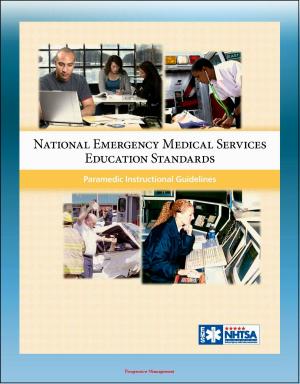Linking Legacies: Connecting the Cold War Nuclear Weapons Production Processes To Their Environmental Consequences - Nuclear and Radioactive Waste, Environmental Contamination
Nonfiction, History, Military, Nuclear Warfare, Science & Nature, Science, Biological Sciences, Environmental Science| Author: | Progressive Management | ISBN: | 9781476406411 |
| Publisher: | Progressive Management | Publication: | May 2, 2012 |
| Imprint: | Smashwords Edition | Language: | English |
| Author: | Progressive Management |
| ISBN: | 9781476406411 |
| Publisher: | Progressive Management |
| Publication: | May 2, 2012 |
| Imprint: | Smashwords Edition |
| Language: | English |
This report connects the missions and functions of our nation's nuclear weapons facilities with the inventories of waste and materials remaining at the plants, and the extent and characteristics of contamination in and around the sites. It aims to provide Congress, DOE program managers, nongovernmental analysts, and the public with an explicit picture of the environmental results of each step in the nuclear weapons production and disposition cycle. Such new knowledge from the past can help serve as a guide for the future. This document was produced by the Environmental Management program's Office of Strategic Planning and Analysis, with assistance from hundreds of people throughout the Department of Energy, as well as from contractors, independent experts, and others.
In the aftermath of the Cold War, the United States has begun addressing the environmental consequences of five decades of nuclear weapons production. In support of this effort, the National Defense Authorization Act for Fiscal Year 1995 directed the Department of Energy (DOE) to describe the waste streams generated during each step in the production of nuclear weapons. Accordingly, this report responds to this mandate, and it is the Department's first comprehensive analysis of the sources of waste and contamination generated by the production of nuclear weapons. The report also contains information on the missions and functions of nuclear weapons facilities, on the inventories of waste and materials remaining at these facilities, as well as on the extent and characteristics of contamination in and around these facilities. Other DOE reports have provided much of this information separately, but this analysis unites specific environmental impacts of nuclear weapons production with particular production processes. The Department used historical records to connect nuclear weapons production processes with emerging data on waste and contamination. In this way, two of the Department's "legacies"—nuclear weapons manufacturing and environmental management—have become systematically "linked."
In reality, the two legacies were never separate. The secrecy surrounding nuclear weapons made a disconnect between the two seem natural. However, the greater openness within the nuclear weapons complex now makes this new linkage possible, even necessary.
Contents: Chapter 1 - Background and Summary of Findings * Chapter 2 - Nuclear Weapons Production Process and History * Chapter 3 - Waste * Chapter 4 - Contaminated Environmental Media * Chapter 5 - Surplus Facilities * Chapter 6 - Materials In Inventory * Appendices
This report connects the missions and functions of our nation's nuclear weapons facilities with the inventories of waste and materials remaining at the plants, and the extent and characteristics of contamination in and around the sites. It aims to provide Congress, DOE program managers, nongovernmental analysts, and the public with an explicit picture of the environmental results of each step in the nuclear weapons production and disposition cycle. Such new knowledge from the past can help serve as a guide for the future. This document was produced by the Environmental Management program's Office of Strategic Planning and Analysis, with assistance from hundreds of people throughout the Department of Energy, as well as from contractors, independent experts, and others.
In the aftermath of the Cold War, the United States has begun addressing the environmental consequences of five decades of nuclear weapons production. In support of this effort, the National Defense Authorization Act for Fiscal Year 1995 directed the Department of Energy (DOE) to describe the waste streams generated during each step in the production of nuclear weapons. Accordingly, this report responds to this mandate, and it is the Department's first comprehensive analysis of the sources of waste and contamination generated by the production of nuclear weapons. The report also contains information on the missions and functions of nuclear weapons facilities, on the inventories of waste and materials remaining at these facilities, as well as on the extent and characteristics of contamination in and around these facilities. Other DOE reports have provided much of this information separately, but this analysis unites specific environmental impacts of nuclear weapons production with particular production processes. The Department used historical records to connect nuclear weapons production processes with emerging data on waste and contamination. In this way, two of the Department's "legacies"—nuclear weapons manufacturing and environmental management—have become systematically "linked."
In reality, the two legacies were never separate. The secrecy surrounding nuclear weapons made a disconnect between the two seem natural. However, the greater openness within the nuclear weapons complex now makes this new linkage possible, even necessary.
Contents: Chapter 1 - Background and Summary of Findings * Chapter 2 - Nuclear Weapons Production Process and History * Chapter 3 - Waste * Chapter 4 - Contaminated Environmental Media * Chapter 5 - Surplus Facilities * Chapter 6 - Materials In Inventory * Appendices















